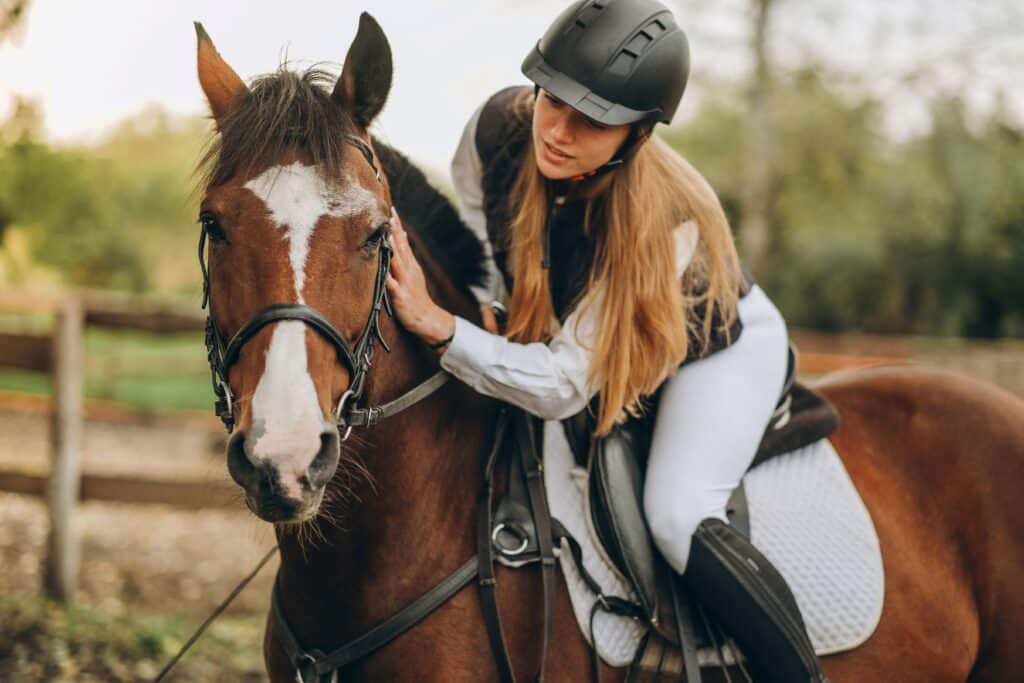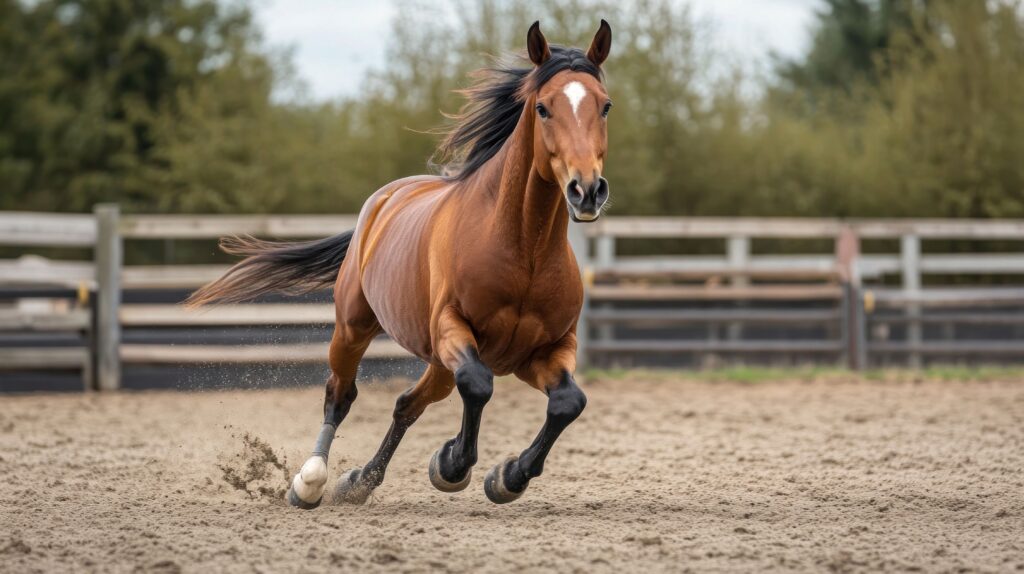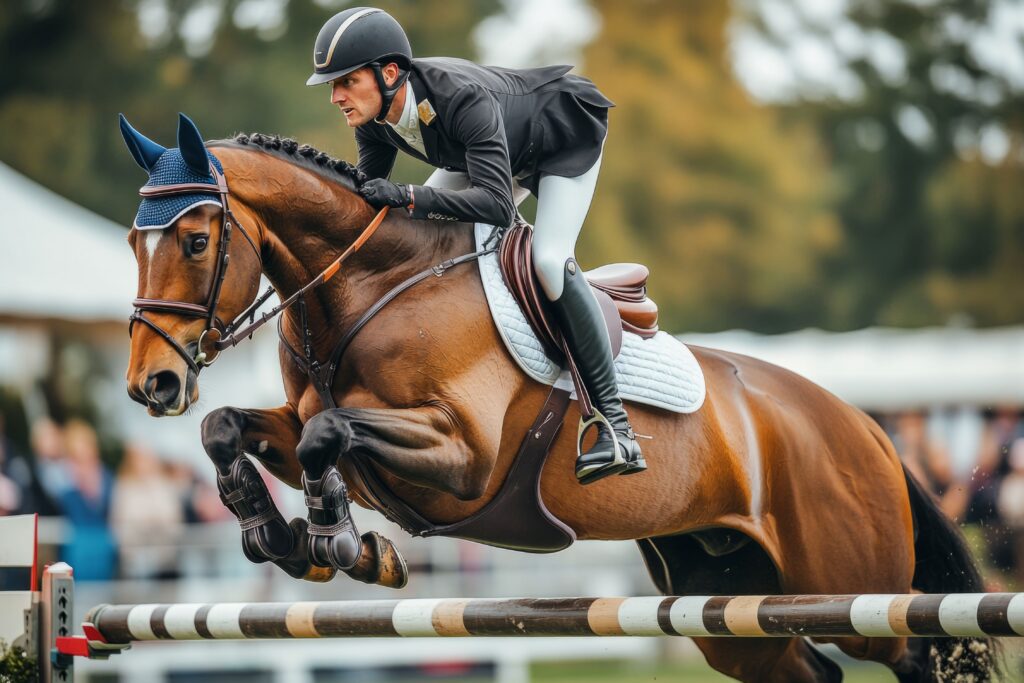Fitness and riding intelligence make the difference when evaluating show jumping horses for sale.
Success starts before the first fence – in the gym and in the rider’s mind. Whether you’re buying your first horse or aiming higher: Are you fit enough to unlock its full potential?
This article shows how top riders build strength, balance, and control – and why that matters when choosing a horse.
Why Fitness Matters When Buying Show Jumping Horses
Modern show jumping is no longer a sport where the horse does all the work. A competitive rider must have explosive strength, a stable core, and precise timing to guide the horse through complex courses. The strain on the human body in high-stakes competitions is comparable to sports like sprinting or skiing.
The better your fitness level, the better you:
- Stay in balance during sudden direction changes
- Communicate subtly through seat and leg
- Maintain rhythm under pressure
Investing in your own fitness means fewer training errors, less risk of injury, and more efficient learning for your horse. This is especially relevant when browsing show jumping horses for sale – because a well-prepared rider can unlock a horse’s true capacity faster and more sustainably.
Core Strength for Show Jumping Horses: What Riders Need
Core strength isn’t just about six-packs. It’s the essential base from which all movement flows. In show jumping, your center determines:
- Postural control over fences
- Balance during take-off and landing
- Independent arm and leg function without collapsing the upper body
Riders should work on planks, Russian twists, and stability ball exercises at least three times a week. These routines don’t just prevent lower back pain – they refine your seat and timing, giving the horse clarity and confidence.
Improve Rider Mobility to Maximize Jumping Horse Potential
While strength is crucial, flexibility and micro-movement control separate the good from the great. Think about your ankle joint during landings, or your ability to follow the horse’s bascule with fluid hips and relaxed shoulders.
Riders should include:
- Dynamic stretching for hips, shoulders, and back
- Yoga sequences tailored to equestrian sports
- Proprioception drills, like balance board sessions or single-leg squats
Mobility work ensures that your signals are smooth, and your body doesn’t block your horse mid-air.
Aerobic Training Builds Focus for Handling Elite Horses

Few riders associate cardio fitness with performance, yet it plays a vital role in:
- Maintaining mental clarity during long courses
- Reducing fatigue-induced mistakes
- Ensuring quicker recovery between rounds
Even a 30-minute run, bike ride, or HIIT workout 2–3 times per week helps regulate breathing, stabilize nerves, and sharpen reactions – all while preparing your body to handle the demands of a powerful, responsive horse.
Creating Sync with Show Jumping Horses Through Rider Precision
Top riders know: You’re not training a horse – you’re building a partnership. And like in any duo sport, harmony stems from timing, rhythm, and communication.
Fitness improves:
- Reaction speed in spontaneous situations
- Precision in aids that reduce confusion
- Endurance during warm-ups, training units, and jump-offs
This symbiosis is exactly what buyers look for when assessing show jumping horses for sale. It’s not just about bloodlines or results – it’s about how quickly and clearly the rider can connect with the animal’s body and brain.
Choose the Right Show Jumping Horse with a Fit Mindset
Being physically prepared as a rider gives you a strategic advantage in the buying process. When trying out different horses, your fitness allows you to:
- Evaluate the horse’s rhythm and responsiveness more objectively
- Avoid miscommunication due to your own tension or instability
- Ride longer and more consistently during test sessions
It also influences the type of horse you can realistically develop. An unfit rider will struggle with sensitive or forward horses, whereas a balanced, athletic rider can unlock talent in greener or more reactive mounts.
This is a crucial insight for anyone navigating show jumping horses for sale: Your body isn’t just a tool – it’s part of the horse’s training environment.
✅ Checklist: What Really Matters When Buying a Show Jumping Horse
| ✔️ | Selection Criteria |
| ⬜ | Match the horse to your competition level: Is the horse currently competing at or capable of reaching your target height (e.g. 1.20m, 1.40m)? |
| ⬜ | Request a full vet check focused on jumping stress zones: Are joints, tendons, hooves and back thoroughly examined under sport-specific demands? |
| ⬜ | Observe temperament under pressure: How does the horse behave in competition or stressful settings – calm, sharp, or reactive? |
| ⬜ | Evaluate bloodlines for both ability and durability: Are past generations proven in sport longevity and performance? |
| ⬜ | Balance rideability and scope: Can you control the power, or is the talent difficult to manage? |
| ⬜ | Check fit for your body type and riding style: Is the horse’s conformation suitable for your height, leg length, and seat? |
| ⬜ | Clarify current management routine: Can you replicate the horse’s feeding, training, and turnout environment long-term? |
| ⬜ | Request videos from different shows and surfaces: Is the horse consistently performing in varied conditions? |
| ⬜ | Factor in tack and custom gear needs: Will the horse require special equipment or saddle fitting? |
| ⬜ | Is a trial period possible? Can you ride the horse multiple times, ideally in your own environment? |
| ⬜ | Transparency of the seller: Do you have clear records on ownership, training history, and competition results? |
| ⬜ | Realistic development potential: Is the horse expected to improve, plateau, or already at its peak? |
Habits of Successful Riders and Their Jumping Horses

The top 1% of riders in show jumping share common fitness habits:
- Consistent off-horse training (3–5 days/week)
- Structured warm-up and recovery protocols
- Mobility routines before competitions
- Mental skills training, often supported by coaches
These routines create a body and mindset that stay sharp under pressure – which often becomes the deciding factor between a clear round and a rail.
If you’re investing in a top-tier horse, your body and brain need to match the animal’s capacity. That’s what turns a promising purchase into a podium finish.
Where Rider Readiness Meets Horse Potential
To excel in show jumping, it’s not enough to find the right horse. You need to be the right rider. That means investing in fitness, balance, and mobility – and making those qualities part of your everyday training life. The more precise and powerful your riding becomes, the more you unlock in the horse beneath you.
Whether you’re browsing show jumping horses for sale or preparing for your next Grand Prix, remember: Your competitive edge starts in your own body. Build it with purpose.
Image source: Michael, sergo321, Nonton, Adobe Stock

